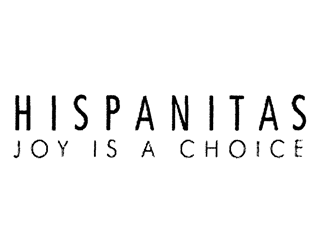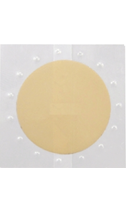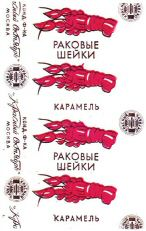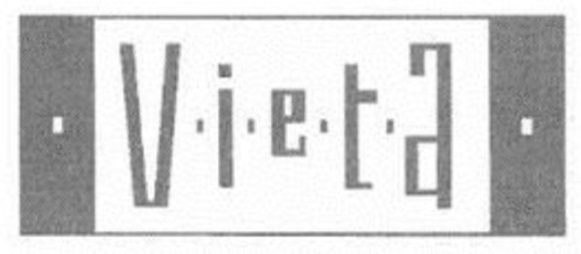IP Case Reports - March 2018
GC T-808/16
Jean Patou Worldwide Ltd v OHIM; Emboga, SA
Date of decision: 30.01.18
Reg 207/2009
Application

- soaps; perfumes, essential oils, cosmetics, hair lotions (3)
- precious metals and their alloys; jewellery, costume jewellery, precious stones; clocks, watches and chronometric instruments (14)
- printed matter; bookbinding material; photographs; stationery (16)
- inter alia goods of leather and imitations of leather (18)
- clothing, headgear, footwear (25)
JOY
- perfumery and beauty products (3)
Commentary
The GC upheld the BoA's decision that there was no likelihood of confusion between the marks pursuant to Art 8(1)(b).
The BoA did not err by comparing the earlier mark with the mark applied for as a whole rather than splitting it up into two separate marks to be compared each separately. Furthermore no element of the mark applied for was considered negligible.
The BoA correctly found that the marks were phonetically and conceptually similar to a certain degree, even if only weakly, due to the presence of the word element 'joy' in the mark applied for. The fact that the BoA carried out a global assessment of the likelihood of confusion for the sake of completeness rather than as a principal concern was irrelevant.
The submission that the BoA did not sufficiently take into account the enhanced distinctive character, acquired through use, of the earlier mark was rejected as unfounded.
Despite the identity of the goods in question, there was no likelihood of confusion given the weak similarity between the marks which produced a significantly different overall impression in the minds of the relevant public.
Rebekah Sellars
GC T-44/16
Novartis AG v OHIM; SK Chemicals GmbH
Date of decision: 31.01.18
Reg 207/2009
Application

- pharmaceutical preparations for the treatment of dementia of the Alzheimer's type (5)
Commentary
The GC upheld the BoA's finding that the mark was invalid for consisting exclusively of the shape of the product necessary to obtain a technical result pursuant to Art 7(1)(e)(ii).
An overall assessment of the mark was not necessary as all the essential characteristics of the mark served a technical result.
The BoA was correct to find that the square shape of the liner had a technical function by facilitating the packaging and storage of the transdermal patches in rectangular cardboard boxes, the overlapping protective plastic layer allowed easy application to the body and the circular shape served to avoid detachment. It was not shown that the knobs around the circular area were decorative or imaginative but rather merely followed the functional shape of the patch.
Furthermore, the BoA was correct to find that the circular beige colour could not be an essential characteristic.
Rebekah Sellars
GC T-804/16
LG Electronics, Inc. v EUIPO
Date of decision: 18.01.18
Reg 207/2009
Application
DUAL EDGE
- Smart phones; portable communications apparatus; monitors for computers; monitors for commercial purposes; apparatus for recording, transmission or reproduction of sound and images; television receivers (TV sets); wearable smart phones; cases for mobile phones; stands for mobile phones; stylus for smart phones (9)
Commentary
The GC upheld the BoA's decision that the mark was descriptive and lacked distinctive character pursuant to Arts 7(1)(b) and 7(1)(c).
The term DUAL EDGE was used on the market at the time of the application to designate an innovative characteristic of screens (including mobile phone screens) namely the fact that those screens were curved on two sides.
The expression DUAL EDGE was therefore liable to be recognised by the relevant public as a description of a characteristic of mobile phones and other devices with screens. The BoA correctly extended the conclusion that the term DUAL EDGE was of certain accessories for mobile phones as they were ancillary to and closely connected to mobile phones.
On the basis of the descriptive nature of the mark, there was no requirement for the BoA to consider registrability under Art 7(1)(b).
Mark Livsey
GC T-869/16
Wenger SA, Inc. v EUIPO; Swissgear Sarl
Date of decision: 23.01.18
Reg 207/2009
Application
SWISSGEAR
- electronic travel accessories (9)
- vehicles, buggies and accessories (12)
- watches of Swiss origin (14)
- leather passport holders (16)
- luggage and bags (18)
- sleeping eqipment for travelling or camping (20)
- tents (22)
- clothing (25)
Commentary
The GC upheld the BoA's decision that the mark was descriptive and lacked distinctive character pursuant to Arts 7(1)(b) and 7(1)(c).
The BoA was correct to find that the terms SWISS and GEAR were both individually descriptive with regard to the goods applied for because the term SWISS indicated geographical origin generally and because the term GEAR had a broad meaning and would be understood to refer to a wide range of belongings, equipment and accessories.
As regards the term SWISSGEAR, although this was a neologism, it was composed of elements that were descriptive of the goods at issue and the combination of those two descriptive terms was not of an unusual nature which was capable of diverting the relevant public's attention from those two descriptive terms. As such the BoA was correct to find that the term SWISSGEAR was descriptive of the goods at issue.
On the basis of the descriptive nature of the mark, there was no requirement for the BoA to consider registrability under Art 7(1)(b).
Mark Livsey
GC T‑398/16
Starbucks, Corp. v EUIPO (Hasmik Nersesyan)
Date of decision: 16.01.18
Reg 207/2009
Application

- services for providing drinks (43)

- ground and whole bean coffee, coffee and expresso beverages and beverages made with a base of coffee and/or espresso, ready to drink coffee (30)
- cafes, cafeterias, snack bars and coffee bars; services rendered or associated with operating and franchising restaurants and other establishments or facilities engaged in providing food and drink prepared for consumption (42)

- ground and whole bean coffee, coffee, expresso beverages, and beverages made with a base of coffee and/or espresso, baked goods, pastries, ready-to-drink coffee (30)
- café, cafeteria, snack bar, coffee bar, coffee house (43)
Commentary
The GC annulled an appeal against the BoA's decision to reject the opposition pursuant to Arts 8(1)(b) and 8(5).
The BoA erred in ruling out any possibility of similarity between the marks on the basis that the similarities between the marks were not such as to make them even remotely similar. The marks had the same general appearance and structure, shared the word "coffee", and, as the mark applied for did not refer to any colour in particular, it extended to cover all colour combinations including those in the earlier marks. The BoA also erred in ruling out any possibility of phonetic or conceptual similarity.
As such, the BoA did not carry out an overall assessment of the likelihood of confusion and its decision was therefore annulled in that regard.
In light of the BoA's finding that there was no similarity between the marks, the BoA did not assess whether the mark applied for would take unfair advantage of the reputation attached to the earlier mark and in this respect the BoA also erred.
The BoA's decision annulled in as for as it found that it was apparent from the dissimilarity of the signs at issue that the conditions for the application of Arts 8(1)(b) and (5) were not satisfied.
George Khouri
GC T‑45/17
Kwang Yang Motor Co., Ltd, v EUIPO; Udo Schmidt
Date of decision: 20.02.18
Reg 207/2009
Application
CK1
- motorcycles, electric motorcycles (12)

- hearses, automobiles (12)
- conversion of motor vehicles into hearses (40)
- conducting engineering studies, technical consultancy; technical appraisals, technical planning, technical project studies, engineering design services, technical project management (42)
Commentary
The GC upheld the BoA's decision that there was a likelihood of confusion under Art 8(1)(b).
The BoA was correct in its assessment that motorcycles covered by the mark applied for were similar to automobiles covered by the earlier mark, as both were land vehicles intended for the carriage of passengers, which coincided in nature and intended purposes and were aimed at the same public.
The earlier mark did not have a clear dominant element and was of normal distinctive character. The mark applied for similarly did not have a dominant element and the number '1' was not anymore eye-catching than the letters 'CK', which comprised the entirety of the earlier mark. The number 1 was insufficient to rule out visual similarities between the marks and may even have been liable to make consumers more likely to identify the common 'CK' element, especially as the stylistic elements of the earlier mark were held to be purely decorative.
Notwithstanding the fact that the relevant public had a high level of attention, the number '1' may have been perceived as indicative of the sequence number of the earlier mark, increasing the potential confusion between the marks in question.
Emma Green
GC T‑102/17
Cantina e oleificio sociale di San Marzano ("CSM") v EUIPO; Miguel Torres, SA
Date of decision: 01.02.18
Reg 207/2009
Application

- alcoholic beverages (except beers); liquers; spirits; wine; Italian wines (33)
SANGRE DE TORO
- alcoholic beverages (except beers), sparkling wines, oenology, wines, vermouths (33)
(EUTM and Spanish marks)
Commentary
The GC upheld the BoA's decision that there was a likelihood of confusion between the marks under Art 8(1)(b).
In opposition proceedings, CSM had failed to put Miguel Torres to proof of use of the earlier EUTM registration. Contrary to CSM's submission, the scope of protection of the earlier mark was therefore not limited to Spanish wines and afforded protection in respect of the full scope of 'alcoholic beverages, except beers'. The BoA was therefore correct to identify a similarity of goods on this basis.
The marks were held to be similar to an average degree on account of the fact that the later mark reproduced the earlier mark in its entirety – the additional figurative elements and omissions of the letters 'gre' and 'de' did not alter this assessment. Similarly the absence of these syllables from the mark applied for did not outweigh the phonetic similarity created by the common elements. The conceptual comparison was effectively neutral.
The appeal on the basis of Art 8(5) was dismissed as inadmissible as the BoA had not ruled on whether the earlier mark had a reputation.
Emma Green
GC T‑795/16
Moscow Confectionery Factory 'Krasnyiy oktyabr' OAO v EUIPO; Dochirnie pidpryiemstvo Kondyterska korporatsiia 'Roshen'
Date of decision: 07.02.18
Reg 207/2009
Application

- confectionery, caramels [candy] (30)

- sweetmeats [candy] (30)
(International Registration designating Bulgaria, Benelux, Germany, Greece, Spain, France, Croatia, Italy, Cyprus, Latvia, Lithuania, Poland, Portugal, Romania, Slovakia and the United Kingdom)
Commentary
The GC upheld the BoA's decision that there was no likelihood of confusion between the marks pursuant to Art 8(1)(b).
The identity of the goods at issue was not disputed. The BoA did not err in considering the most distinctive element of the mark applied for was the word CRABS, which had no connection with the goods at issue and which was visually dominant within the mark as a whole. The marks were visually easy to distinguish, were not phonetically similar and their conceptual similarity was limited to the presence of crayfish.
As such, although the marks both contained representations of crayfish, there were a number of significant differences, especially visual differences in their structure and overall impression, which rendered the marks only similar to a low degree.
The BoA was entitled to draw this conclusion on the basis of the inherent distinctiveness of the earlier mark. As the earlier mark was neither descriptive of nor allusive to the goods concerned, it possessed a normal degree of inherent distinctiveness. As a result of the overall differences between the marks, there was no likelihood of confusion, even for identical goods.
Emma Green
GC T‑879/16
Sony Interactive Entertainment Europe Ltd, v EUIPO; Marpefa, SL
Date of decision: 08.02.18
Reg 207/2009
Application

- recording discs, cleaning devices for recording discs, loudspeakers, loudspeaker systems, sound amplifiers, video tapes, magnetic tapes, cabinets for loudspeakers, video cameras, exposed cinematographic films, compact discs, transparencies, photographic apparatus, computers, video screens, apparatus for the reproduction of sound and images, television sets, record players (9)
Commentary
In revocation proceedings, the GC annulled the decision of the BoA, pursuant to Art 65(6).
In an earlier decision (T-690/14 Vieta (not reported)), the GC held that 'apparatus for the reproduction of sound and images' was not defined sufficiently precisely and narrowly, annulled the first decision of the BoA insofar as it held that genuine use had been demonstrated for 'apparatus for the reproduction of sound and images' and dismissed the appeal against the decision rejecting the revocation of the mark for those goods. The decision in T-690/14 was not appealed, which had consequently aqcuired the force of res juridicata. The proceedings were referred back to the Fourth BoA (R1010/2016-4).
The Fourth BoA was entitled to take a new decision in the revocation action insofar as it related to those goods. However, the GC held the Fourth BoA had clearly disregarded the judgment of the GC in T-690/14, by finding that the term 'apparatus for the reproduction of sound and images' had a clear and specific content and covered only a single type of product, namely television sets, and by inferring therefrom that proof of genuine use had been adduced in respect of those goods. The GC consequently annulled the decision of the Fourth BoA.
Emma Green
High Court refers invalidity questions referred to CJEU
Sky Plc & Ots v SkyKick UK Ltd & Anr* (Arnold J; [2018] EWHC 155 (Ch); 06.02.18)
Summary
In a case where Sky alleged that use of Skykick infringed its SKY marks, Arnold J referred the following questions to the CJEU: (i) can a registered EU trade mark be declared invalid on the ground that it is registered for goods and services that are not specified with sufficient clarity and precision (and does "computer software" lack sufficient clarity or precision); and (ii) can it constitute bad faith to apply to register a trade mark without any intention to use it in relation to the specified goods or services. Hilary Atherton reports.
Facts
Sky alleged that Skykick had infringed four of its EU trade marks and one UK trade mark comprising the word SKY by use of the sign 'SkyKick' and variants thereof, and that it had committed passing off. SkyKick used the sign 'SkyKick' in relation to a product which automated the process of migrating a business's email accounts from Microsoft Office to Microsoft Office 365. It provided this product to Microsoft 'partners' who were specialised IT providers and acted as re-sellers of Microsoft products. SkyKick denied infringement and passing off and counterclaimed for a declaration that the SKY marks were wholly or partially invalid because their specifications lacked clarity and precision and that the marks were registered in bad faith.
Can lack of clarity and precision of the specification be asserted as a ground of invalidity?
The Judge noted that the CJEU's decision in IP TRANSLATOR (Case C-307/10) required that an applicant for a trade mark must specify the goods and services in respect of which registration was sought with sufficient clarity and precision to enable the competent authorities and third parties to determine the extent of the protection conferred by the mark. However, it did not necessarily follow that, if the applicant failed to do so and the office failed to ensure that the applicant rectified the lack of clarity or precision during the course of examination, the mark could be declared invalid on that ground after registration. He therefore referred this question to the CJEU.
The Judge was of the view that "computer software" for which Sky's marks were registered was too broad and conferred too broad a monopoly on a proprietor. However, he said that it did not necessarily follow that the term was lacking in clarity and precision, and he therefore also referred this question to the CJEU.
Validity of the SKY marks: bad faith
SkyKick contended that the SKY marks were registered in bad faith because Sky did not intend to use the marks in relation to all of the goods and services specified in their specifications. The Judge therefore referred to the CJEU the questions: (i) can it constitute bad faith to apply to register a trade mark without any intention to use it in relation to the specified goods or services?; (ii) if the answer is yes, is it possible to conclude that the applicant made the application partly in good faith and partly in bad faith if the applicant had an intention to use the trade mark in relation to some of the specified goods or services, but no intention to use the trade mark in relation to other specified goods or services?; and (iii) is Section 32(3) (which requires a declaration of intention to use a UK trade mark to be made on application) compatible with the Directive?
Territorial aspects of Sky's claim for infringement of its EU marks
Arnold J said that, if Sky were able to establish a likelihood of confusion under Article 9(2)(b) in at least part of the EU, then it would be entitled to EU-wide relief unless SkyKick demonstrated that there was no likelihood of confusion in other parts of the EU. Although the Judge thought there was more room for a different conclusion under Article 9(2)(c), it was not necessary for him to consider the point.
Infringement under Article 9(2)(b)
Arnold J was of the view that, if the SKY marks were validly registered in respect of the goods and services relied on by Sky, then they were infringed. This was in view of the distinctive character of the SKY marks, the identity of the goods and services, and the similarity between the signs which meant that the average consumer was capable of perceiving the 'SkyKick' signs as a sub-brand of SKY. However, only customers and end users of SkyKick's goods and services were likely to be confused, not Microsoft partners who would pay a high degree of care and attention.
Infringement under Article 9(2)(c)
The Judge found no infringement under Article 9(2)(c). In the absence of a likelihood of confusion, he was not persuaded that there was any real risk of detriment to the distinctive character of the SKY marks. It was not suggested that SkyKick intended to take advantage of the reputation of SKY marks and no reason for believing that there was likely to be any transfer of image from SKY to SkyKick.
Own name defence
The Judge was not satisfied that SkyKick's use of its name was in accordance with honest commercial practices because SkyKick had not acted fairly in relation to Sky's legitimate interests. In particular, he considered that Sky was justified in their concern that confusion may yet occur in the future.
Passing off
The Judge dismissed Sky's passing off claim. Although Sky's extensive actual use of SKY formative marks supported the existence of a misrepresentation, it also militated against there being a misrepresentation, particularly given the absence of evidence of actual confusion.
* Case report can be found at http://www.bailii.org/
Editors: Katharine Stephens, Hilary Atherton and Emma Green, Bird & Bird LLP.






